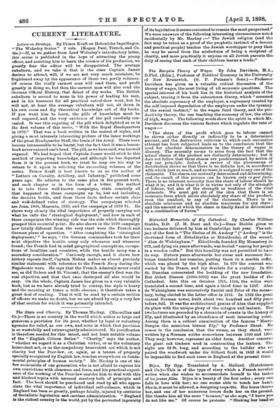Historical Memorials of .Ely Cathedral. By Charles William Stubbs, D.D.
(J. M. Dent and Co.)—Dean Stubbs gives us two lectures delivered by him at Cambridge last year. The sub- ject of the first is "The Shrine of St. Awdrey " ("Awdrey" is the shortened form of 2Etheldrytha or Etheldreda), of the second, "Alan de Walsingham." Ethelclreda founded Ely Monastery in 673, and dying six years afterwards, was buried "among her people in a wooden coffin." But this humility was not permitted to have its way. Sixteen years afterwards her sister and successor Sex- burga translated her remains, putting them in a marble coffin, which was placed by the high altar. In 870 the convent was wasted by the Danes, and lay desolate for a century. In 970, St. Dunstan consecrated the building of the new foundation. But Abbot Simeon (1080-1093) was the great builder of the Cathedral. Into this on October 17th, 1106, the relics were translated a second time, and again a third time in 1257. Alan de Walsingham was successively Sacrist and Prior of the monas- tery, being elected to the latter office in 1341. In 1322 the great central Norman tower, built about two hundred and fifty years before, fell. It was the architectural genius of Alan that supplied its place with the unique glory of the octagon and lantern. The two lectures are preceded by a chronicle of events in the history of Ely, and illustrated by an abundance of most interesting notes. Among them is a critical examination of the famous "Merrie Sungen the muniches binnen Ely," by Professor Skeet. Be comes to the conclusion that the verses, as they stand, were written by a Norman scribe somewhere between 1100 and 1200_ They may, however, represent an older form. Another concerns the giant oak timbers used in constructing the lantern. The eight are 63 ft. long, and according to the builder who re- paired the woodwork tinder Sir Gilbert Scott in 1862 it would be impossible to find such trees in England at the present time.


































 Previous page
Previous page